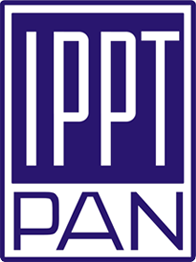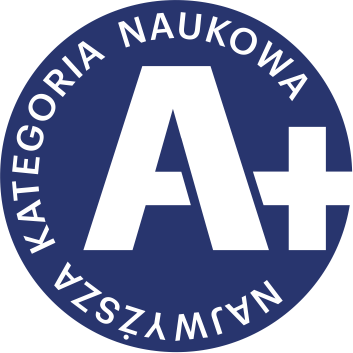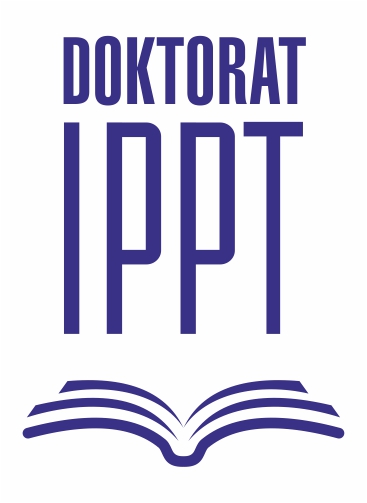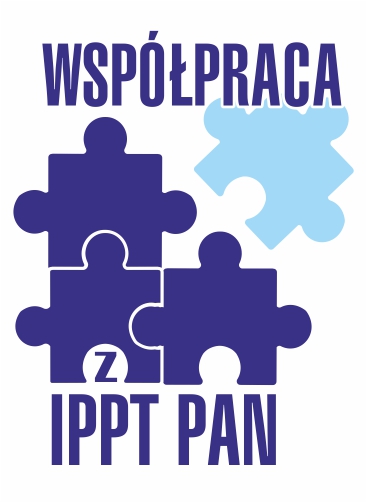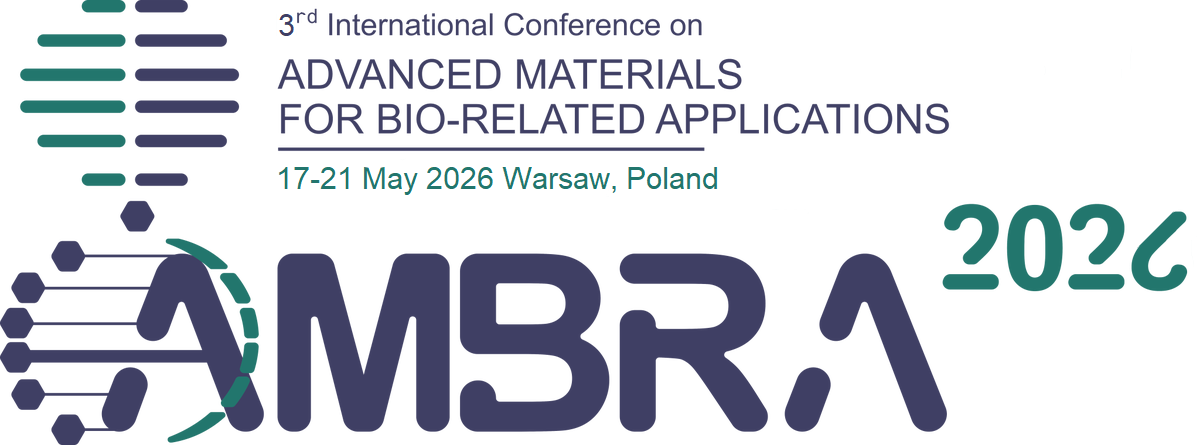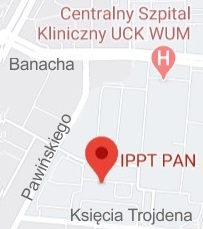| 1. |
Jasinski J. J.♦, Lubas M.♦, Stasiak T.♦, Bik M.♦, Marchewka J.♦, Mościcki T., Wilk L.♦, Nowakowska-Langier K.♦, Barlak M.♦, Frydrych K., Kurpaska L.♦, Sitarz M.♦, Jagielski J.♦, Raman spectroscopy imaging and microstructure characterisation of Ag+ implanted TiO2 hybrid layers,
Journal of molecular structure, ISSN: 0022-2860, DOI: 10.1016/j.molstruc.2025.143775, Vol.1349, No.2, pp.143775-1-143775-9, 2026 Streszczenie:
The paper presents research on Ag+ ions implanted TiO2 thin layers with Raman spectroscopy imaging. The oxide layers were formed on Ti–6Al–4 V ELI titanium alloy substrates through a multistage hybrid oxidation process, which combines fluidised bed (FB) diffusive treatment at 640 °C for 8 h with physical vapor deposition (PVD) pulse magnetron sputtering. Silver ions were implanted into the TiO2 layer after the fluidised bed process using a Metal Vapour Vacuum Arc implanter to form an interface for further PVD oxidation and generate an antibacterial interface that prevents inflammation during top layer spallation and cracking under working conditions. The ion implantation process was preceded by Monte Carlo simulations modelling of the depth profiles using SRIM-2013.00 software. The fluence of implanted ions was 1 × 1017 cm-2, and the acceleration voltage was 60 kV. The modelled range at peak damage of the real Ag+ + Ag2+ + Ag3+ + Ag4+ profile was about 40 nm. Raman spectroscopy imaging, XRD, SEM and TEM observations were carried out to evaluate the effects of ion implantation, analyse oxide phases and determine the mechanism of TiO2 layer formation during combined oxidation. The layers exhibited both amorphous and crystalline characteristics, and the top surface area was composed of TiO2 rutile and anatase, as well as oxygen vacancies (at 750 cm-1) and crystalline TiO2 (at 310 cm-1). Amorphous TiO2 dominates in the middle and near substrate layer. The layer before the substrate is composed of Ag+ ion area (ca. 100 nm) and dense TiO2 mixture of rutile (236 cm-1) and partially anatase (141 cm-1). Ultimately, it has been found that the functionalisation of oxide layers using a multistage hybrid oxidation and ion implantation process leads to a change in oxygen concentration in the various TiO2 layers forming a highly defected and active top surface layer. The homogeneous multiphase oxide layers on Ti alloys implanted with Ag+ ions for generating an antibacterial interface might improve the bioactive properties, which in perspective might be essential for biomedical applications. Słowa kluczowe:
Titanium alloys, Tio2 thin layers, Ag+ ion implantation, Rutile/anatase, Raman spectroscopy imaging Afiliacje autorów:
| Jasinski J. J. | - | inna afiliacja | | Lubas M. | - | inna afiliacja | | Stasiak T. | - | inna afiliacja | | Bik M. | - | inna afiliacja | | Marchewka J. | - | inna afiliacja | | Mościcki T. | - | IPPT PAN | | Wilk L. | - | inna afiliacja | | Nowakowska-Langier K. | - | inna afiliacja | | Barlak M. | - | inna afiliacja | | Frydrych K. | - | IPPT PAN | | Kurpaska L. | - | inna afiliacja | | Sitarz M. | - | inna afiliacja | | Jagielski J. | - | National Centre for Nuclear Research (PL) |
|  | 70p. |
| 2. |
Kosińska A.♦, Jagielski J.♦, Bieliński D.M.♦, Urbanek O., Wilczopolska M.♦, Frelek-Kozak M.♦, Zaborowska A.♦, Wyszkowska E.♦, Jóźwik I.♦, Structural and chemical changes in He+ bombarded polymers and related performance properties,
JOURNAL OF APPLIED PHYSICS, ISSN: 0021-8979, DOI: 10.1063/5.0099137, Vol.132, pp.074701-1-18, 2022 Streszczenie:
The paper presents the effect of He+ ion irradiation of selected polymeric materials: poly(tetrafloroethylene), poly(vinyl chloride), ethylene-propylene-diene monomer rubber, nitrile-butadiene rubber, styrene-butadiene rubber, and natural rubber, on their chemical composition, physical structure, and surface topography. The modification was studied by scanning electron microscopy, Fourier transform infrared spectroscopy, Raman spectroscopy, and differential scanning calorimetry. Irradiation with a high-energy ion beam leads to the release of significant amounts of hydrogen from the surface layer, resulting in an increase in cross-linking that manifests itself by shrinkage of the surface layer, which in turn causes significant stresses leading to the formation of a crack pattern on the polymer surface. The development of microroughness is combined with oxidation. Shallow range of the ions makes the modified layer “anchored” in the substrate via bulk macromolecules, assuring its good durability and adhesion to elasto-plastic substrates. Changes in the surface layer were manifested by the modification of functional properties of the polymers. The hardness of the layer subjected to the ion irradiation process increases even up to 10 times. After modification with the ion beam, a significant decrease in frictional forces was also observed, even up to 5–6 times. The microscopic analysis of wear traces confirmed that the wear resistance also significantly increased. However, ion bombardment of polymeric materials caused a reduction in their mechanical strength (despite the range limited to the surface layer of the order of micrometers) and electrical resistance, which has a negative impact on the possibility of using the materials in some applications. Afiliacje autorów:
| Kosińska A. | - | inna afiliacja | | Jagielski J. | - | National Centre for Nuclear Research (PL) | | Bieliński D.M. | - | inna afiliacja | | Urbanek O. | - | IPPT PAN | | Wilczopolska M. | - | inna afiliacja | | Frelek-Kozak M. | - | inna afiliacja | | Zaborowska A. | - | inna afiliacja | | Wyszkowska E. | - | National Centre for Nuclear Research (PL) | | Jóźwik I. | - | Institute of Electronic Materials Technology (PL) |
|  | 100p. |
| 3. |
Ustrzycka A., Skoczeń B.♦, Nowak M., Kurpaska Ł.♦, Wyszkowska E.♦, Jagielski J.♦, Elastic–plastic-damage model of nano-indentation of the ion-irradiated 6061 aluminium alloy,
INTERNATIONAL JOURNAL OF DAMAGE MECHANICS, ISSN: 1056-7895, DOI: 10.1177/1056789520906209, pp.1-35, 2020 Streszczenie:
The paper presents experimental and numerical characterization of damage evolution for ion-irradiated materials subjected to plastic deformation during nano-indentation. Ion irradiation technique belongs to the methods where creation of radiation-induced defects is controlled with a high accuracy (including both, concentration and depth distribution control), and allows to obtain materials having a wide range of damage level, usually expressed in terms of displacements per atom (dpa) scale. Ion affected layers are usually thin, typically less than 1 micrometer thick. Such a low thickness requires to use nano-indentation technique to measure the mechanical properties of the irradiated layers. The He or Ar ion penetration depth reaches approximately 150 nm, which is sufficient to perform several loading-partial-unloading cycles at increasing forces. Damage evolution is reflected by the force-displacement diagram, that is backed by the stress–strain relation including damage. In this work the following approach is applied: dpa is obtained from physics (irradiation mechanisms), afterwards, the radiation-induced damage is defined in the framework of continuum damage mechanics to solve the problem of further evolution of damage fields under mechanical loads. The nature of radiation-induced damage is close to porosity because of formation of clusters of vacancies. The new mathematical relation between radiation damage (dpa) and porosity parameter is proposed. Deformation process experienced by the ion irradiated materials during the nano-indentation test is then numerically simulated by using extended Gurson–Tvergaard– Needleman (GTN) model, that accounts for the damage effects. The corresponding numerical results are validated by means of the experimental measurements. It turns out, that the GTN model quite successfully reflects closure of voids, and increase of material density during the nano-indentation. Słowa kluczowe:
radiation-induced damage, evolution of vacancy clusters, nano-indentation test, ion irradiation, radiation hardening Afiliacje autorów:
| Ustrzycka A. | - | IPPT PAN | | Skoczeń B. | - | Cracow University of Technology (PL) | | Nowak M. | - | IPPT PAN | | Kurpaska Ł. | - | National Centre for Nuclear Research (PL) | | Wyszkowska E. | - | National Centre for Nuclear Research (PL) | | Jagielski J. | - | National Centre for Nuclear Research (PL) |
|  | 100p. |



